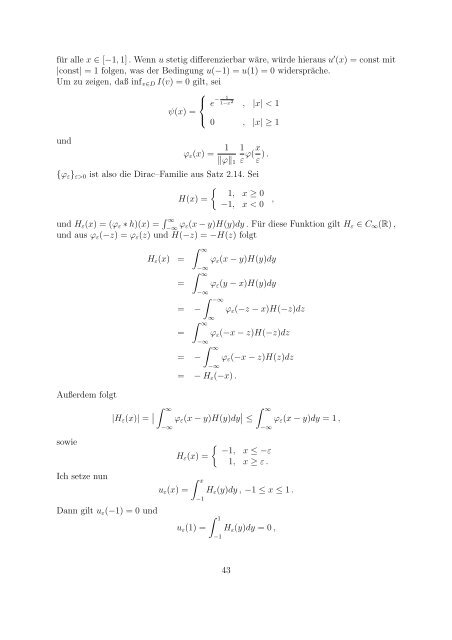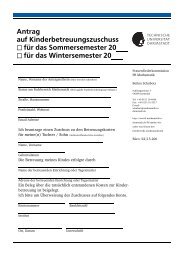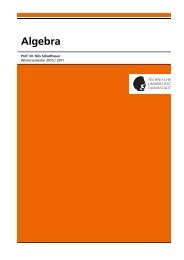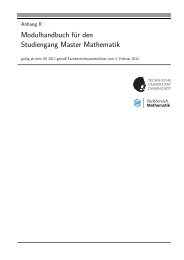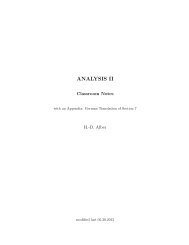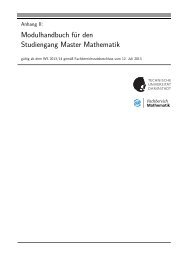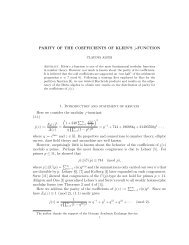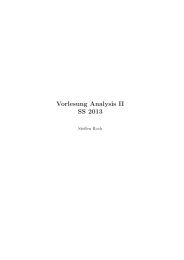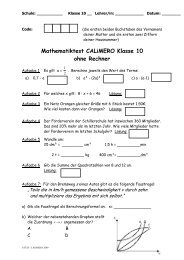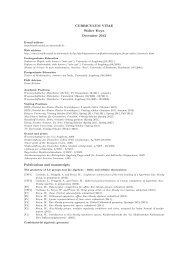Variationsrechnung und Sobolevräume - Fachbereich Mathematik ...
Variationsrechnung und Sobolevräume - Fachbereich Mathematik ...
Variationsrechnung und Sobolevräume - Fachbereich Mathematik ...
Sie wollen auch ein ePaper? Erhöhen Sie die Reichweite Ihrer Titel.
YUMPU macht aus Druck-PDFs automatisch weboptimierte ePaper, die Google liebt.
für alle x ∈ [−1, 1]. Wenn u stetig differenzierbar wäre, würde hieraus u ′ (x) = const mit|const| = 1 folgen, was der Bedingung u(−1) = u(1) = 0 widerspräche.Um zu zeigen, daß inf v∈D I(v) = 0 gilt, sei<strong>und</strong>⎧⎨ψ(x) =⎩e − 11−x 2 , |x| < 10 , |x| ≥ 1ϕ ε (x) = 1‖ϕ‖ 11ε ϕ(x ε ).{ϕ ε } ε>0 ist also die Dirac–Familie aus Satz 2.14. Sei{ 1, x ≥ 0H(x) =−1, x < 0 ,<strong>und</strong> H ε (x) = (ϕ ε ∗ h)(x) = ∫ ∞ϕ −∞ ε(x − y)H(y)dy . Für diese Funktion gilt H ε ∈ C ∞ (R),<strong>und</strong> aus ϕ ε (−z) = ϕ ε (z) <strong>und</strong> H(−z) = −H(z) folgtAußerdem folgtsowieIch setze nun|H ε (x)| = ∣ ∣Dann gilt u ε (−1) = 0 <strong>und</strong>H ε (x) =∫ ∞−∞=∫ ∞−∞∫ ∞= −=u ε (x) == −−∞∫ −∞∞∫ ∞−∞∫ ∞ϕ ε (x − y)H(y)dyϕ ε (y − x)H(y)dyϕ ε (−z − x)H(−z)dzϕ ε (−x − z)H(−z)dz−∞= − H ε (−x).ϕ ε (x − y)H(y)dy ∣ ∣ ≤H ε (x) =∫ x−1u ε (1) =ϕ ε (−x − z)H(z)dz∫ ∞−∞{ −1, x ≤ −ε1, x ≥ ε .H ε (y)dy , −1 ≤ x ≤ 1.∫ 1−1H ε (y)dy = 0,ϕ ε (x − y)dy = 1,43


